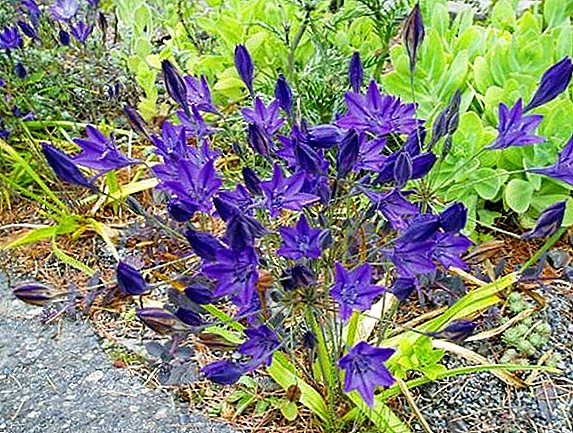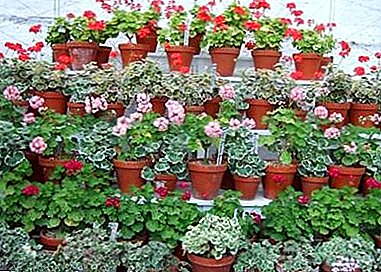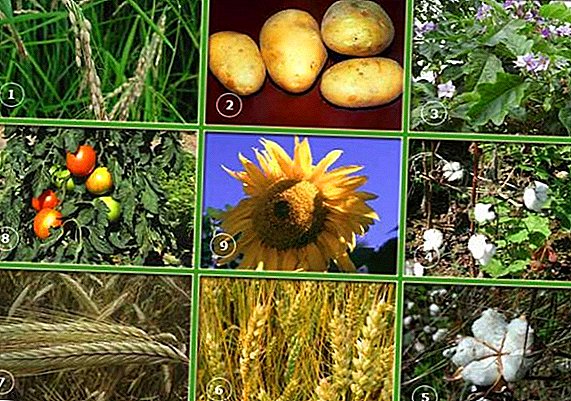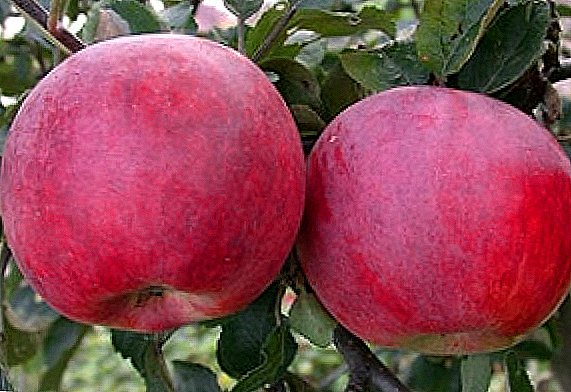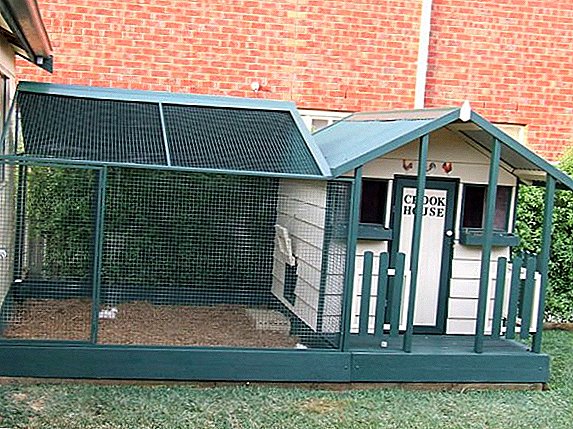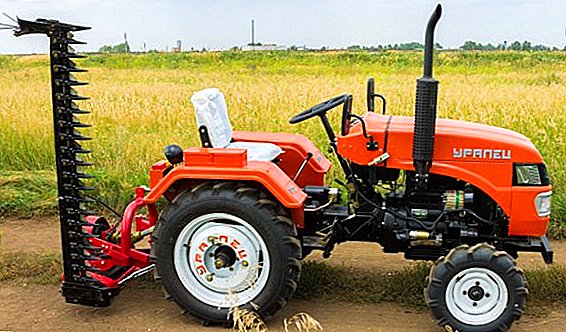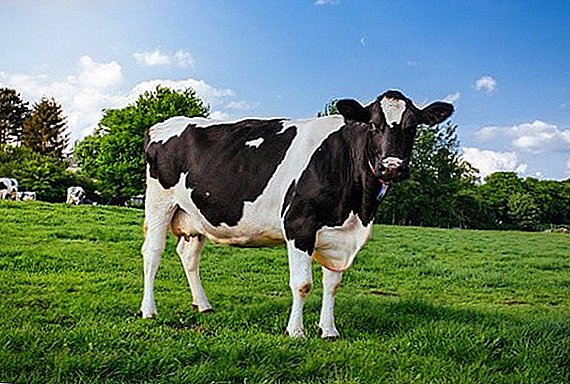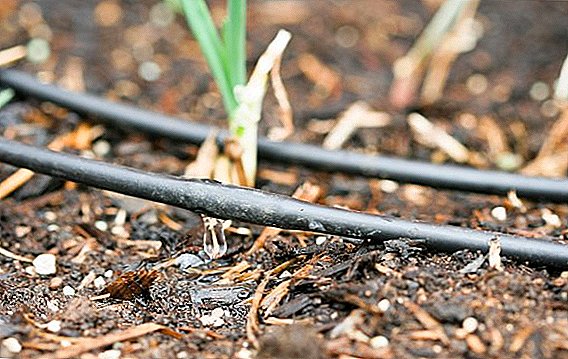 There are several reasons why gardeners are unwilling or unable to purchase ready-made irrigation systems for vegetable gardens and greenhouses. In such cases, drip irrigation is made by hand from the means that each summer resident has.
There are several reasons why gardeners are unwilling or unable to purchase ready-made irrigation systems for vegetable gardens and greenhouses. In such cases, drip irrigation is made by hand from the means that each summer resident has.
After all, on your site you can find enough items and parts for this. Plus will be the minimum financial costs. In addition, a quality system made of drip irrigation of the garden can be safely used for its intended purpose.
Advantages of using drip irrigation
 Aeration of the soil. The soil is not overmoistened, which provides good ventilation of the plant root system for the entire period of growth, which is not interrupted at the time of irrigation or after it. Soil oxygen helps the root system to achieve the maximum possible functioning.
Aeration of the soil. The soil is not overmoistened, which provides good ventilation of the plant root system for the entire period of growth, which is not interrupted at the time of irrigation or after it. Soil oxygen helps the root system to achieve the maximum possible functioning.
Root system Root development is much better than with other irrigation methods. The plant consumes fluid more intensively and absorbs nutrients. With this method of irrigation, the efficiency exceeds 95%, when surface irrigation yields only 5%, and sprinkling - about 65%.
Nutrition. Liquid fertilizers are absorbed directly by the root system. Nutrients are absorbed with maximum intensity, which gives the best effect. This method of plant nutrition is most effective in conditions with a dry climate.
Plant protection. The leaves remain dry, as a result of which the likelihood of disease is significantly reduced, as the drugs are not washed off the leaves.
Prevent soil erosion. This method of irrigation makes it possible to irrigate on slopes or topographically complex areas. It is not necessary to construct complex structures or transfer the soil.
Significant water savings. Compared with other irrigation methods, drip irrigation saves water in the range of 20-80%. Moisturizing occurs exclusively root system. The evaporation losses of water are reduced. No waste of peripheral effluent.
Early ripening. With this irrigation, the soil temperature is higher than with other variants, and this stimulates the crop to an earlier harvest.
Energy and labor costs. Reduced power costs for irrigation. Energy is saved. The dropping system is not affected by the pressure drop in the pipeline.
 Agrotechnology. Drip irrigation allows treating the soil, spraying the plants and harvesting at any convenient time independent of irrigation, because the areas between the beds are not moistened throughout the season.
Agrotechnology. Drip irrigation allows treating the soil, spraying the plants and harvesting at any convenient time independent of irrigation, because the areas between the beds are not moistened throughout the season.
Soils. Drip irrigation allows you to grow plants on soils with a moderate salt component, as you can apply salted water.
Did you know? Among Australians, the popularity of autowatering has grown due to the possibility of saving water. For residents of this continent there are strict restrictions on the use of this natural resource. Such irrigation systems are installed on ¾ cottages and gardens of Australians.
How to make a simple irrigation system
Drip irrigation is not an innovative technology and was coined long ago in a dry country - in Israel. Since then, it has been actively used in the agricultural industry of the whole world.
But in a small area it does not make sense to use expensive irrigation systems. Therefore, drip irrigation can be done with your own hands from scrap materials.
Making drip bottle irrigation
The easiest way to build homemade drip irrigation is to stock up on unnecessary plastic bottles. Such a system can be very useful for small areas.

One tank is designed for a maximum of two bushes, which makes it possible to develop an individual mode of irrigation for each plant.
For watering crops that consume more fluid, bottles with an increased number of holes are attached. So moistening will be sufficient. A two-liter tank is enough for up to four days of irrigation.
If you have to leave for a longer period, you can put more bottles, for example, 5-6 liters.
The design for the bottle irrigation of garden plants can be constructed in three ways.
№1. Dig in the capacity between rows or bushes, having previously made holes in it with a needle. Do not pierce the big holes. Moisture should not flow quickly.
Important! Puncture as low as possible so that no liquid remains in the bottle.Leave the container neck over the soil for 5-7 centimeters, it will be more convenient to fill it. To prevent the liquid from evaporating, screw the bottle on with a cap with a hole previously made in it.
 If you just close the neck with a cap, a low pressure will form inside the bottle, which will doubt it. Depending on the type of soil, the number of holes made varies.
If you just close the neck with a cap, a low pressure will form inside the bottle, which will doubt it. Depending on the type of soil, the number of holes made varies.
For sandy will be enough for three. For clay, it is better to do five.
№2. Water tanks are suspended above the plants. At the edges of the beds, set the pegs and stretch a wire between them, or a strong rope. On it, hang the bottle without a bottom.
The moisture in this case will evaporate faster, but the heated water will not injure the roots of plants that love heat.
In the neck, make a hole of such a diameter that the liquid does not overflow. To direct water directly to the root system, you need to insert a rod from the handle into the cover. So the water will be better absorbed.
Plug the loose end of the stem with a toothpick and make a hole higher, then the water will not flow out too quickly. Place the joint between the rod and the cover and smear it with a sealant to prevent excess liquid from reaching the garden bed.
№3. In this method, as materials for drip irrigation, bottles are also used, but with a small addition. The bottom of the bottle should be cut and a special ceramic cone should be put on the neck.
 They stick the container in the ground in the root circle of the plant. The internal structure of the cone serves as a kind of indicator that determines the level of soil moisture. As soon as it begins to dry, moisture is again fed to the root system.
They stick the container in the ground in the root circle of the plant. The internal structure of the cone serves as a kind of indicator that determines the level of soil moisture. As soon as it begins to dry, moisture is again fed to the root system.
How to create an irrigation system of medical droppers
Another simple way to feed plants is to collect drip watering with your own hands. from medical droppers. The main thing is to have on hand all the necessary materials and tools.
From droppers you can make an effective irrigation system, which is very affordable in terms of material resources. To create such a structure, it is sufficient to adhere to the plan and follow all the rules.
First of all, cut the system into segments equal to the length of the beds, and make holes in them. The distance between them should be at least half a meter.
Then hang the tubes above the beds. This can be done with various fasteners for parts. Plug the ends of the tubes. The wheel allows you to adjust the water pressure.
Do-it-yourself dropper for drip irrigation is a very convenient system. With its help, you can quickly water the beds without any special effort.
 Also, this system is suitable for feeding plants with liquid fertilizers. The nutrient fluid falls directly under the root of the culture.
Also, this system is suitable for feeding plants with liquid fertilizers. The nutrient fluid falls directly under the root of the culture.
The disadvantages include the need to dismantle the equipment when the temperature drops. Plastic in the winter may become unusable.
How to make an underground drip irrigation
The name of this method speaks for itself. Its essence lies in the fact that moisture to the roots of plants comes not from the outside, but directly underground.
This result is achieved thanks to pre-installed special structures for underground irrigation. Next, we will tell you how to organize drip underground watering with your own hands.
Required Tools
To create a device for underground irrigation on the garden plot, you will need the following:
- Hoses and pipes of suitable diameter - 0.5 cm.
- Drainage layer consisting of pebbles, rubble, slag and scraps of branches.
- Shovel.
- Polyethylene roll.
- Filtering element
- Water access point.
Manufacturing and installation process
Before you equip drip irrigation at home, decide on the method of water supply. If the water supply is not supplied to the garden, you should consider an option with a separate tank specifically for irrigation.
It is possible to accumulate rain water from the roof, it remains only to think over the system of drainage, supply and collection of liquid in a separate container. A barrel of water should be higher than the beds.
Physical laws have not been canceled, and water under pressure will come from the barrel. You can adjust the height of the tank to increase or decrease the water pressure.
The next step is the construction of the system itself. Dig a hole or a trench, cover it with polyethylene and fill the drainage layer. Install the tubes (the holes in them should already be done) with the filter. Top with a drainage layer again and after that cover it with earth.
Did you know? In the US, the autowatering system is in the top of the desired improvements for the garden.
If hands work reluctantly
Just recently, experienced gardeners with “hands from where they need” could only build drip irrigation systems. It's not so easy to calculate everything, pick up hoses and fixtures, carefully make holes. Today, in specialized stores, you can choose any model of the drip irrigation system you wish.
Choosing a drip irrigation system
Manufacturers of drip irrigation systems can invent and produce various structural details. As they say, everything is in their hands. Yes, and they can be called pretentiously and in different ways, if only to attract customers.
But the standard drip irrigation system consists of the following elements: a main hose, through which water from the primary source goes to the supply hose, from which the droppers depart.
 Droppers can be either small thin tubes or larger hoses, at the ends of which there are twisted irrigation dosing devices. The deeper they are twisted, the less water drips.
Droppers can be either small thin tubes or larger hoses, at the ends of which there are twisted irrigation dosing devices. The deeper they are twisted, the less water drips.
Present in the kit and various adapters that are used for joining individual elements of the structure. There are still plugs for unnecessary holes in the hoses, so that water does not flow from where it is not necessary.
It is better to choose a system with a built-in filter that prevents clogging droppers. The pegs fixing the hose will also be a plus, since, depending on the water pressure, the hose can change its position in space.
You can additionally order a timer - a very convenient thing. With it, you can give a system of drip irrigation intelligence. You can set the start and end of irrigation, as well as the interval between waterings. This feature is very convenient in the case when you have to leave your garden for a long time.
Installation of the system in the greenhouse or garden
Every case that concerns the construction of any construction for a garden or a garden should begin with planning. As they say, the calculation is the key to common sense and successful design.
Therefore, the organization of drip irrigation should begin with the suburban area scheme. The action plan is as follows:
- In the drawing, start from the place of supply of the central water supply or mark where the water tank will be placed, how the main hose or pipe will be laid. According to them, the water will come to drip tapes. Measure the length of the beds and the distance between crops. This makes it possible to correctly calculate the length of the hose for drip irrigation and the distance between the dropper tubes.
- Mount the tank with water at a height of 1.5 - 2.5 meters above the site.
- Lay the trunk hose from the water tank and run perpendicular to the beds.
- Drill the holes with a screwdriver at an equal distance of about half a meter. Attach the drip tapes to the trunk pipe with fittings. They should be as much as the beds on the site.
- Lay drip tape along the beds, positioning closer to the plant. Connect on one side with the main hose, and put plugs on the other.
- Connect the main pipe to the water tank. To clean water, be sure to install a filter between the barrel or tap and pipe.
- Insert the trunk pipe into the tank a little higher than the bottom so that the garbage does not fall into the system.
- Fill the tank with water and turn on drip irrigation.
- Flush the system before first use. To do this, remove the plugs and run the water through the drip hoses.

How to automate the process: "smart drip irrigation" do it yourself
 The drip irrigation system is automated by the usual uncomplicated system, which without the daily participation of the owner at a certain time will turn on the pump, starting the irrigation system.
The drip irrigation system is automated by the usual uncomplicated system, which without the daily participation of the owner at a certain time will turn on the pump, starting the irrigation system.
For this drip irrigation design, a hose with through holes must be connected to the pump. Holes can be made with a screwdriver with a thin drill or red-hot awl.
First pierce the hose from right to left and then from top to bottom. So the water will be poured evenly even when clogged. Punctures must be done equidistantly at a distance of up to 35 centimeters. Put the prepared hose on the beds.
Important! Place a plate under the hose to prevent blockage.
Knowing the power characteristics of the pump, determine the time that is needed to start the irrigation system, and fix it with the help of an automatic pump start. Such a mechanism works autonomously, and there is no need for the frequent appearance of the owner at the cottage.
The root system of lawn grass runs into the depth of no more than fifteen centimeters, so in strong heat you need frequent and long watering of lawns. Otherwise, they quickly wither, and will have to sow new grass.
Lawn grass is very sensitive to the harmful effects of ultraviolet radiation and wind, which means that the soil in these places dries out much faster.
 The main problem of drip irrigation is that the water does not reach the extreme holes, flowing out earlier from the initial ones. But with a lot of water, it turns out that this system is absolutely not economical, and the soil is over-wetted.
The main problem of drip irrigation is that the water does not reach the extreme holes, flowing out earlier from the initial ones. But with a lot of water, it turns out that this system is absolutely not economical, and the soil is over-wetted.
A way out of this situation can be found with the help of a dispenser, which is purchased at any store of country accessories. But you can not spend money on such a device and find a way out using a plastic bottle.
From it you can make a homemade dispenser, on the principle similar to the drain of the toilet. It is mounted to the place where the tee of drip irrigation is located. In any case, it is possible to balance the rate of water supply both to each bed and to individual plants.
Did you know? The land on which the proper irrigation is organized gives three times the yield.


